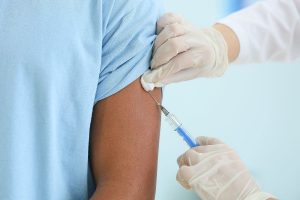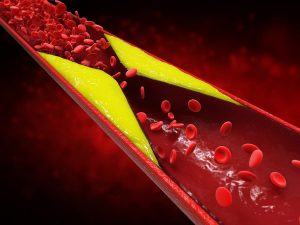After nearly a year of painful isolation, the U.S. government said Wednesday that vaccinated nursing home residents can hug their loved ones again and enjoy more indoor visits.
The new guidance, issued by the U.S. Centers for Medicare and Medicaid Services (CMS), comes after coronavirus cases and deaths among nursing home residents have plummeted in recent weeks as the country’s vaccination rollout accelerated.
“Now that millions of vaccines have been administered to nursing home residents and staff, and the number of COVID cases in nursing homes has dropped significantly, CMS is updating its visitation guidance to bring more families together safely,” Dr. Lee Fleisher, chief medical officer at the CMS, said in a statement.
Nursing homes have borne the brunt of the pandemic’s pain, representing about 1% of the U.S. population but accounting for 1 in 3 deaths, according to the COVID Tracking Project.
But coronavirus hasn’t been the only thing this vulnerable population has suffered through: Loneliness and isolation have contributed to physical and mental declines, officials say.
“There is no substitute for physical contact, such as the warm embrace between a resident and their loved one,” the CMS stated in its new guidance, “Therefore, if the resident is fully vaccinated, they can choose to have close contact [including touch] with their visitor while wearing a well-fitting face mask and performing hand hygiene before and after.”
The CMS also said that maintaining 6 feet of separation is still the safest policy, and outdoor visits are preferable even when residents and visitors have been vaccinated.
“All of us feel enormous relief that we are at this next juncture and feel confident that reopening visitation can be achieved safely, given all we have learned during the pandemic,” Terry Fulmer, president of the John A. Hartford Foundation, which works to improve care for older adults, told the Associated Press. “A great deal more has been learned about infection control, and families and facilities are ready.”
Under the new guidance, homes in counties with high rates of COVID-19 can still have indoor visits, provided they take precautions. When an outbreak occurs at a facility, it doesn’t have to go on lockdown for 14 days. Visits can still happen as long as the outbreak is isolated to an area or unit of the facility. Compassionate care visits should be allowed at all times, the guidance said, even if there’s an outbreak or a resident is unvaccinated.
The nursing home industry said it is ready for the change.
“This is the right thing to do,” said Katie Smith Sloan, president of LeadingAge, which represents nonprofit facilities, told the AP. “Federal policy now reflects the real progress that has been made in vaccinating nursing home residents and staff.”
Figures from the U.S. Centers for Disease Control and Prevention show that nearly 1.4 million nursing home residents and more than 930,000 staffers have been fully vaccinated, the AP reported. Nursing home cases peaked around the end of December and then declined sharply, particularly since the middle of January. Deaths among residents fell from 7,042 for the week ending Dec. 20 to 1,112 for the week ending March 7, the AP said.
Biden announces plan to buy 100 million more doses of J&J vaccine
An additional 100 million doses of Johnson & Johnson’s single-shot COVID vaccine will be ordered by the U.S. government by the end of the year, President Joe Biden announced Wednesday.
The move means there should be enough doses on hand to vaccinate children and, if necessary, give booster doses or reformulate the vaccine to combat emerging, more contagious variants of the virus, The New York Times reported.
The announcement came during a White House meeting Biden held with executives from Johnson & Johnson and the pharmaceutical giant Merck. The rival companies are partnering to ramp up production of the Johnson & Johnson vaccine, in a deal brokered by the White House.
Biden has said that every American adult — roughly 260 million people — will have access to a vaccine by the end of May. But the senior officials said the administration was trying to prepare for unexpected challenges, the Times reported.
The officials said that they expected the doses to be delivered sometime in the second half of this year, the newspaper said. The Biden Administration has said the J&J/Merck collaboration will boost production and improve J&J’s packaging capacity, known in the vaccine industry as “fill-finish” — two big bottlenecks that have put the company behind schedule.
Biden has aggressively been working to acquire as much vaccine supply as possible, as quickly as possible. Before he took office, he pledged to get 100 million shots into the arms of Americans by his 100th day in office.
At the time, two vaccines — from Moderna and Pfizer — had been authorized by the U.S. Food and Drug Administration for emergency use. After his inauguration, Biden said his administration would have enough vaccine doses to cover every American by the end of summer. Last month, he announced the government had secured enough doses from those two companies to cover every American by the end of July. After the J&J vaccine was approved for emergency use recently, that timetable was moved up to the end of May.
As of Thursday, more than 62.4 million Americans have gotten one shot and nearly 33 million people are now fully vaccinated, according to the U.S. Centers for Disease Control and Prevention.
New guidance gives vaccinated Americans more freedom
New social distancing guidance released by the federal government on Monday gives fully vaccinated Americans more freedom to socialize and move through their communities.
The CDC said people who are two weeks past their final shot can safely visit indoors with unvaccinated members of a single household at low risk of severe disease without wearing masks or social distancing. That recommendation would free many vaccinated grandparents who live near their unvaccinated children and grandchildren to gather for the first time since the pandemic began a year ago.
The CDC also said fully vaccinated people can gather indoors with those who are also fully vaccinated, and they do not need to be quarantined or tested after exposure to COVID-19.
“We know that people want to get vaccinated so they can get back to doing the things they enjoy with the people they love,” CDC Director Dr. Rochelle Walensky said in an agency news release. “There are some activities that fully vaccinated people can begin to resume now in their own homes. Everyone – even those who are vaccinated – should continue with all mitigation strategies when in public settings.”
Some restrictions were still advised, even for the vaccinated. For example, if a vaccinated person lives in a group setting and is around someone with COVID-19, he or she should still stay away from others for 14 days and get tested, even without symptoms.
Peter Hotez, co-director of the Texas Children’s Center for Vaccine Development, welcomed the new guidelines, but added they have been too long in coming.
“The sooner we move to telling people if you’re fully vaccinated, you don’t have to wear masks — that will be an incentive for people to get vaccinated,” Hotez told the Post.
The level of caution people need to exercise should be determined by the characteristics of those who are unvaccinated in a social setting, the CDC said. For instance, if a fully vaccinated person visits an unvaccinated friend who is 70, and therefore at risk of severe disease, the visit should take place outdoors, with masks and physical distancing, the guidance says.
Advocates for older people embraced the new guidance, because many older people, especially those who live alone, have spent the past year in virtual isolation, they said.
Bill Walsh, vice president for communications for AARP, said that, “To the extent this allows people, grandkids, families, loved ones in nursing homes or assisted living [to interact], we welcome that,” he added. “We’ve heard over the past year some heart-wrenching stories of family separation.”
A global scourge
By Thursday, the U.S. coronavirus case count passed 29.2 million while the death toll passed 528,000, according to a Times tally. On Thursday, the top five states for coronavirus infections were: California with over 3.6 million cases; Texas with more than 2.7 million cases; Florida with over 1.9 million cases; New York with more than 1.7 million cases; and Illinois with over 1.2 million cases.
Curbing the spread of the coronavirus in the rest of the world remains challenging.
In India, the coronavirus case count was nearly 11.3 million by Thursday, a Johns Hopkins University tally showed. Brazil had over 11.2 million cases and more than 270,000 deaths as of Thursday, the Hopkins tally showed.
Worldwide, the number of reported infections passed 118.1 million on Thursday, with more than 2.6 million deaths recorded, according to the Hopkins tally.
More information
The U.S. Centers for Disease Control and Prevention has more on the new coronavirus.
SOURCES: Associated Press; The New York Times; Washington Post
Source: HealthDay
Copyright © 2025 HealthDay. All rights reserved.











-300x211.jpeg)





